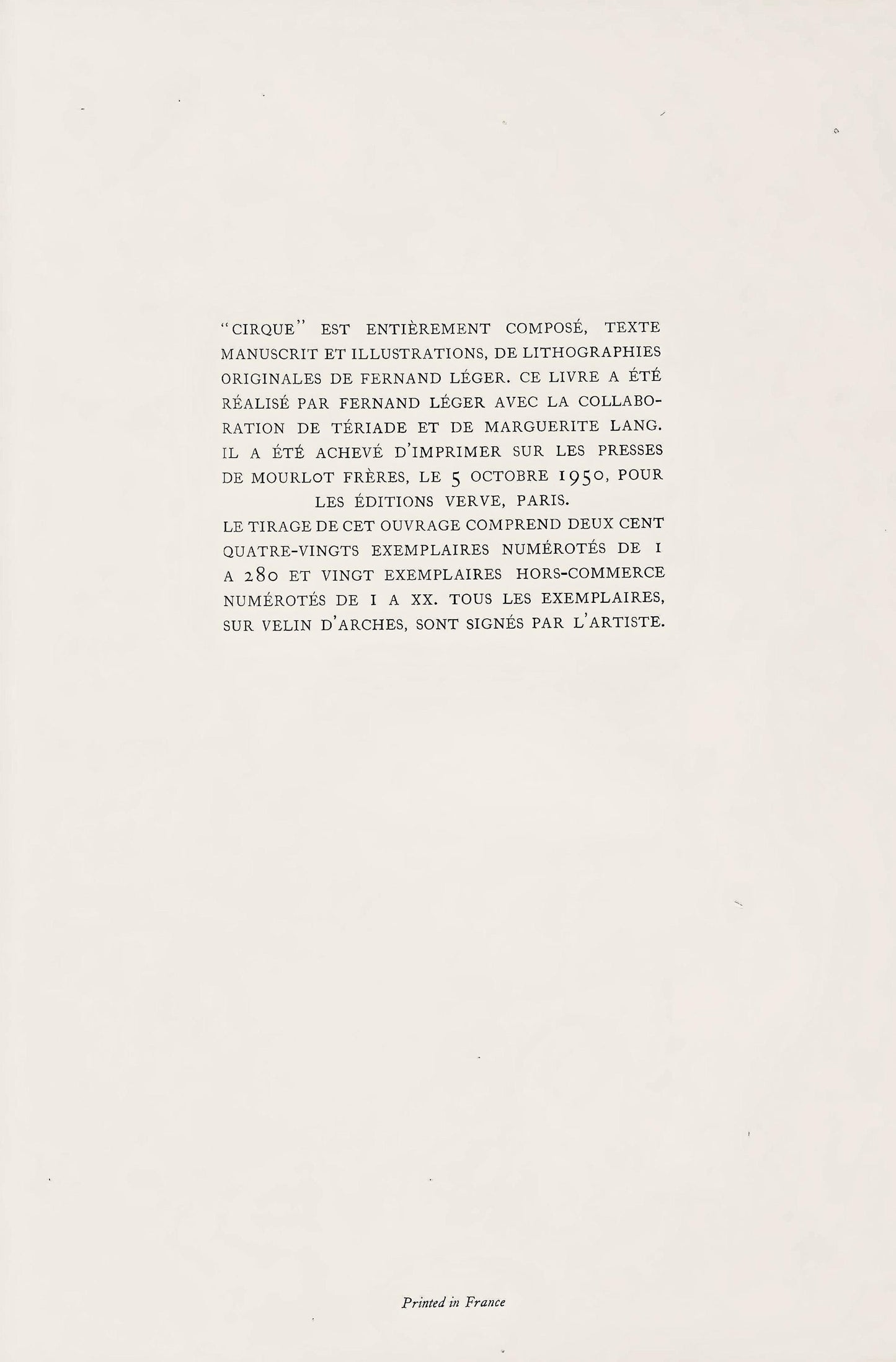Fernand Lger, Composition, Cirque, Lithographies Originales, Lithograph
Fernand Lger, Composition, Cirque, Lithographies Originales, Lithograph
Couldn't load pickup availability
Condition: Pre-Owned
Lithograph on vlin dArches paper.
Paper size: 16.63 x 12.69 inches.
Excellent condition.
Unsigned and unnumbered, as issued.
Notes: From the folio, Cirque, Lithographies Originales, 1950.
Published by Les ditions Verve, Paris, under the direction of Triade, diteur, Paris; printed by Mourlot Frres, Paris, October 5, 1950.
Excerpted from the folio (translated from French), "Cirque" is entirely composed, handwritten text and illustrations, of original lithographs by Fernand Lger.
This album was produced by Fernand Lger with the collaboration of Triade and Marguerite Lang.
It was completed printing on the presses de Mourlot Frres, on October 5, 1950, for Les ditions Verve, Paris.
The edition of this album includes II, CCLXXX examples numbered from I to CCLXXX and XX hors-commerce examples.
Numbered from I to XX. All examples, on vlin d'Arches, are signed by the artist [on the colophon].
All items are carefully packed and shipped via insured courier services. Processing time: 1–3 business days.
Tracking details will be provided once shipped.
Read more of our
Shipping Policy.
All sales are final unless otherwise stated. Authenticity guaranteed. Please read full terms on our website before purchase.
Read more of our
Terms of Service.






Preview upcoming auctions and place a bid early.




































